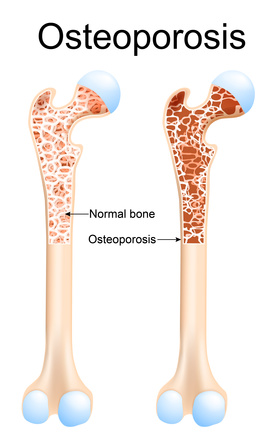
Boost Your Fertility, Naturally, with Heather Leeson
September 2, 2025
Menopause, Hormone Balance, and How to Know if a Strategy is Working
October 2, 2025Why Oestrogen Detox Matters for PMS, endometriosis, fertility and even HRT

Photo: Skica911/pixabay.com
When it comes to hormones, balance is everything. Oestrogen plays an essential role in cardiovascular health, bone density, brain function, and overall vitality. But like all good things, too much—or poorly metabolised—oestrogen can become problematic and is associated with many female hormone related problems including infertility, PMS, PCOS, endometriosis and fibroids. Oestregen detox remains important post menopause when taking HRT, especially if you have a family history of hormone dependent cancer.
Understanding Oestrogen and Its Detox Pathways
There are three primary forms of oestrogen: estrone (E1), estradiol (E2), and estriol (E3). Each has unique effects in the body, but all require careful regulation. Once oestrogens have done their job, the body must safely break them down and eliminate them.
This process happens in three key stages:
- Phase 1 (liver): Oestrogen is first metabolised into intermediate compounds. Some of these are potentially harmful and can damage DNA if not handled properly.
- Phase 2 (liver): The body neutralises these metabolites through processes such as methylation, making them less harmful and ready for excretion.
- Phase 3 (gut): The final step is elimination through the stool. If digestion is sluggish or constipation is present, metabolites may linger or even get reabsorbed.
Problems arise when these stages are out of sync. For example, if Phase 1 produces harmful metabolites faster than Phase 2 can neutralise them, oestrogen dominance symptoms may appear—think PMS, heavy periods, breast tenderness, skin breakouts, poor sleep, or low mood.
The Good, the Bad, and the Ugly of Oestrogen Metabolites
Not all oestrogen breakdown products behave the same way:
- The “Good” (2-OH): Considered the least harmful. It binds weakly to oestrogen receptors and is generally less likely to cause DNA damage.
- The “Bad” (16-OH): Encourages cell growth. This can be beneficial for bone health but may increase risk in tissues like the breast if in excess.
- The “Ugly” (4-OH): The most concerning. If not quickly moved through Phase 2 detox, this metabolite may increase DNA mutation risk and bind strongly to oestrogen receptors.
Testing and Personalisation
A blood test will usually only check your levels of oestradiol (E2) but will not provide any information about other forms of oestregen or whether your oestregen metabolism if working well. Functional tests like the DUTCH test can provide more more information on how your body handles oestrogen. It looks at:
- How much oestrogen is being produced overall. It also assesses progesterone, which can be helpful for evaluating the oestrogen–progesterone balance in women with a menstrual cycle and testosterone and other androgens (male hormones), which often in combination with oestregen can be raised in PCOS
- How oestrogen is metabolised through Phase 1.
- How efficiently Phase 2 pathways (like methylation) are working.
- How these results connect to symptoms and risks, including hormone-sensitive cancers.
It’s worth noting that methylation speed depends partly on genetics. The enzyme COMT (catechol-O-methyltransferase) is one of the main players here and may run fast, slow, or average depending on your DNA. This means supplementing with methyl donors (like high-dose methyl folate or B12) isn’t always a one-size-fits-all solution and can make some people feel worse. Similarly, popular supplements like quercetin may also not be helpful with a slow COMT.
How To Support Healthy Oestrogen Detox
The good news is that diet and lifestyle play a powerful role in supporting detoxification pathways. Key strategies will always depend on your individual results, but can include:
- Eating at least two servings of brassica vegetables daily (broccoli, kale, cauliflower, Brussels sprouts). Try our cauliflower miso soup, which includes both brassica veg and helpful beneficial bacteria
- Using supplements like DIM or I3C only under professional guidance, as they can lower oestrogen levels. This can be unhelpful in a perimenopausal or menopausal woman or if you are trying to conceive
- Supporting methylation with other nutrients like magnesium, choline, and creatine can be a game changers but again should be personalised to your needs.
- Drinking green tea regularly (around two cups per day).
- Keeping coffee in moderation may be beneficial for some.
- Reducing or eliminating alcohol, which takes detox priority in the liver and crowds out oestrogen processing. Alcohol is a ‘bully’ when it comes to detoxification and will push itself to the top of the detox queue
- Being cautious with high doses of milk thistle or valerian without testing, though note that milk thistle can be protective for overall liver health.
- Supporting gut health with probiotics, prebiotics, and fermented foods like sauerkraut or kimchi—especially important for Phase 3 clearance. Above all, don’t ignore constipation. Regular bowel movements are crucial for clearing excess oestrogen from the body.
Long term hormone health
Oestrogen detox isn’t just about symptom relief—it’s about long-term health. By ensuring your body can process and eliminate oestrogen safely, you’re not only reducing uncomfortable hormone-related symptoms but also supporting resilience against conditions such as hormone-sensitive cancers. If you are considering hormone replacement this information is also vital both before starting and when on it.
If you’re struggling with a condition associated with excess oestrgen — or simply want to understand your unique hormone metabolism—testing like the DUTCH test, alongside dietary analysis, can provide valuable insight. With the right nutrition and lifestyle strategies, you can support your body’s natural detox pathways and keep oestrogen working for you, not against you.


